Saturday, 23 June 2007
Distance 21 km
Duration 4 hours 30 minutes
Ascent 275 m, descent 190 m
Map 59 or 66 of the TOP100 blue series (now superseded)
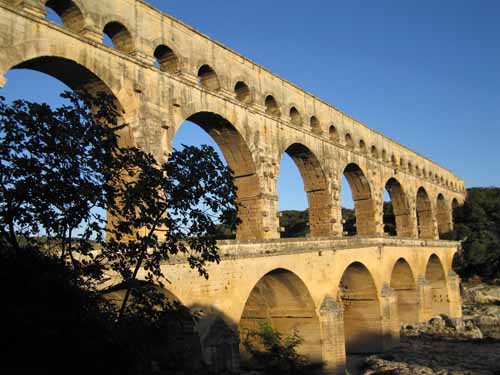
Breakfast was more of a duty than a pleasure, as we had no fruit to lighten our stodgy muesli.
The entire kilometre or so from the camping ground to the Pont du Gard was one gigantic car park, a rectangular desert of barriers, signs and white markings. At this hour (7 am) there was not a single car to disturb the pattern. At the far end was a huge viewing apron, but the bridge itself easily dominated these modern distractions.
It was neck-craningly tall and impressive, with its great golden stones lit by the morning sun. As the only people there, we felt very tiny.
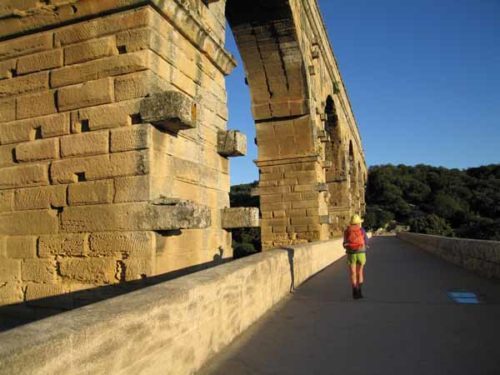
It was built within a few decades of Christ’s birth, as part of the water supply to the Roman town of Nîmes.
Water from springs near Uzès, on the other side of the Gardon, was conveyed in a channel almost 50 kilometres long, and crossed the river at this point. It was a remarkable piece of engineering, with only 17 metres of fall over the whole distance.
The massive stones were so accurately cut that they needed no mortar, and were hoisted into place by means of a block and tackle, powered by a human treadmill.
The whole aqueduct took only about three years to finish, which just goes to show what you can do if you have slaves.
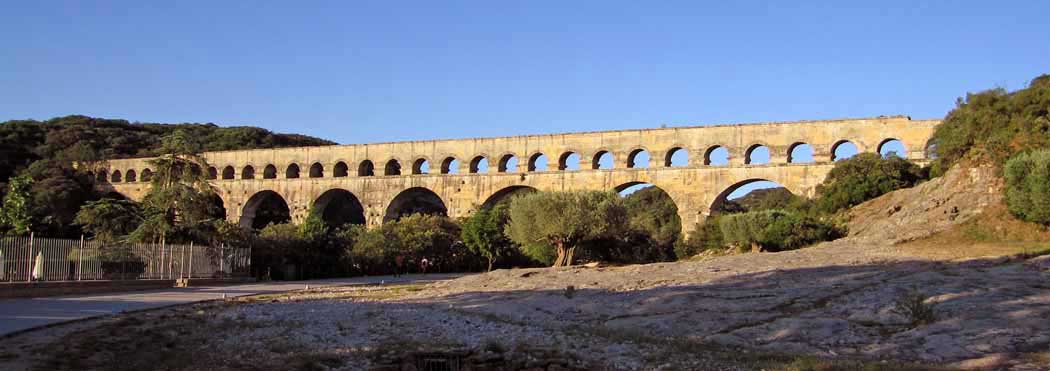
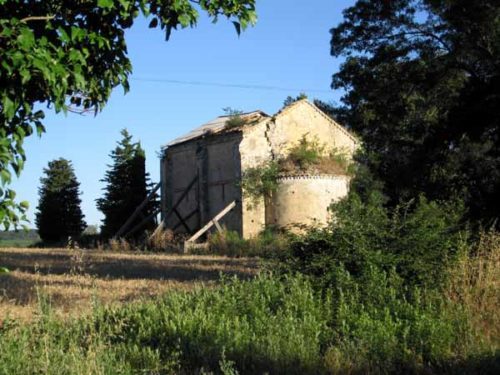
Picking up the GR6 signs as we crossed the river (on the lowest level of the Pont), we lost them immediately on the other side and found ourselves thrashing about in a thin wood. Even if we had seen a sign, we would have been doubtful, as the GR bifurcates at this point, so we set off on a little wheel track going west.
This proved to be the way to go. After passing a little ruined chapel, the track became tortuous, weaving through thick shrubbery beside the river, but eventually we came out onto a crag overlooking the village of Collias, with its big slanting bridge.
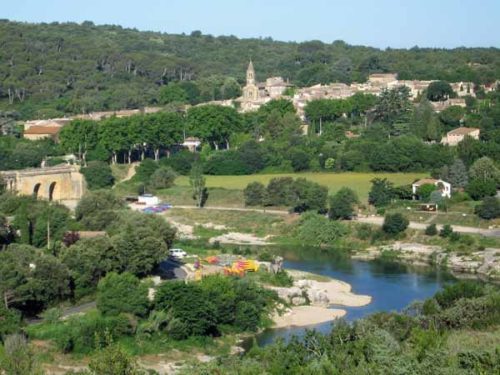
We descended to the streets, bought some bread and pastries and hurried to the bar, which was halfway up a steep hill. Of the two umbrellas on the terrace, one was already occupied by a group of cyclists, but we got the other one for our very welcome second breakfast.
It was 8:30 on Saturday morning, the time when amateur cyclists come out in droves, and our companions were a particularly decorative lot. We managed to take a photo of one without appearing to.
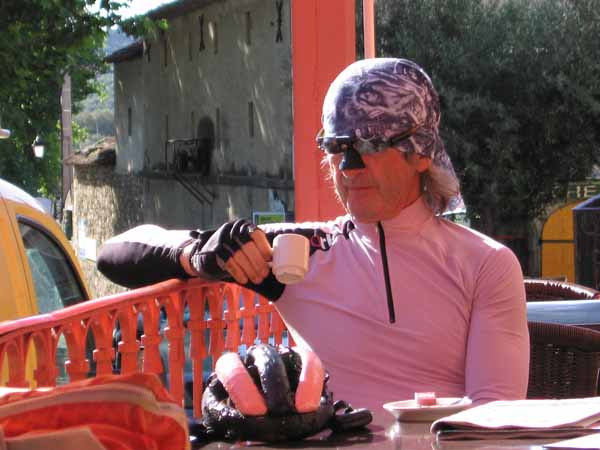
At Collias we parted company with the GR6, as there was a severe shortage of villages upstream along the river, and anyway, we wanted to visit Uzès.
We took a small road down and across fields of vines, hoping that a connecting track marked on the map would be visible on the ground, but before we even started looking for it we had overshot it, and arrived in the hamlet of Sagriès.
A postman in a yellow van instructed us to turn back, which we were reluctant to do, but it was good advice, as we soon found a bike path going directly down to the highway (the D98) at the Pont des Charrettes.
Crossing over, we climbed into the outskirts of Uzès, grey and unadorned, and started to see people with shopping baskets.
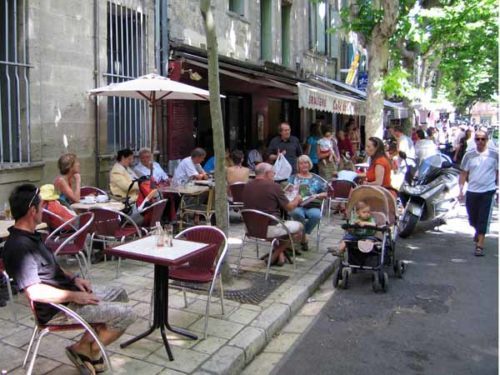
As we hit the commercial streets we were swept along by a tide of people surging up a narrow alley, and emerged into the pandemonium of the Saturday market.
Cars, motorbikes, strollers, stallholders, tourists and family groups contested every square inch of the street. We fought our way to a table outside a bar and sat there with our coffee, watching the passing parade.
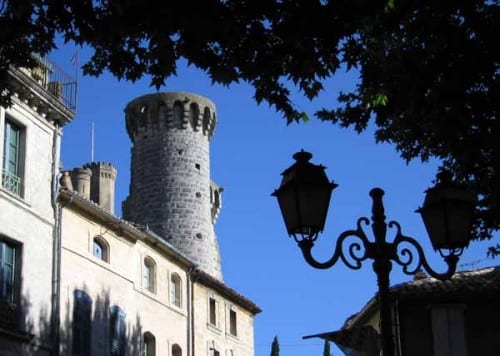
The Office of Tourism was further up the street, in a little square. There we got a map of the village, a brochure with a suggested walking tour, and a list of all the hotels in the department of Gard.
We would need to stay at a hotel the following night, for lack of a camping ground.
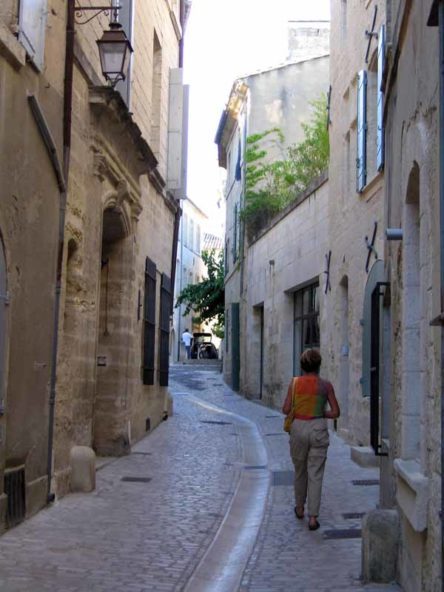
The way to the Uzès camping ground was via a lane beside the Office of Tourism. It was a muddy mess, in the process of being dug up to be paved with cobblestones.
Then we went down past the graveyard and arrived in a lather of sweat to find the camping manager doing a leisurely lap of the pool, which had a screen of trees on three sides and a bar on the fourth. He kindly got out and did the paperwork, and later we sampled the delicious water ourselves.
We had showers and put up our tent against an ancient stone wall in the shade of a fig tree. Several hours passed in a prone position before the sun declined enough to warrant a trip back to town.
We ordered rosé at a bar near a fountain, surrounded by other drinkers. An elderly couple dressed entirely in white were at the next table with their thin, excitable middle-aged son, who was trying to borrow money from them.
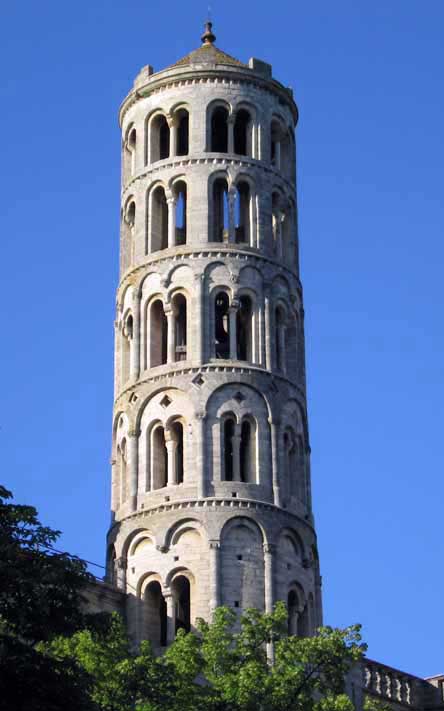
The mother, dignified as a ship in full sail, wept quietly behind her sunglasses as he berated her, clutched her hand, kissed her and waved his arms about. The father looked on with an ironical half-smile. A wedding party consisting of dozens of cars crawled down the street with horns blaring and pink ribbons fluttering.
Before dinner we telephoned the hotel at Saint-Geniès-de-Malgoirès (l’Esquielle) and booked a room for tomorrow.
We then took the walking tour of the old pedestrian quarter of town, a tangle of small streets and squares, with a couple of churches and several handsome towers at the top, including the Window Tower and the lofty Ducal Palace, one of the best preserved in France, with its patterned enamel roof in the Burgundian style.
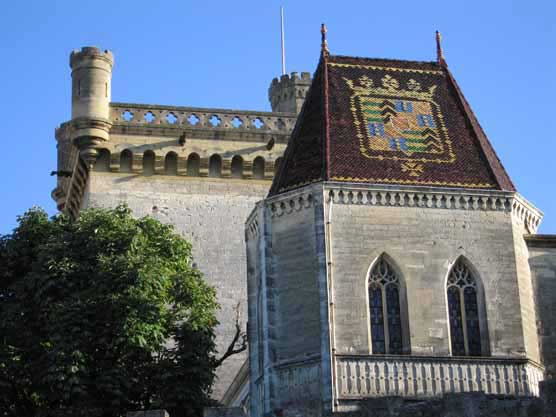
Having done the circuit, we retreated to the expansive Place des Herbes for dinner.
This must surely have been the centre of town life in former times and is surrounded by arcades with beautifully restored houses above and restaurants below.
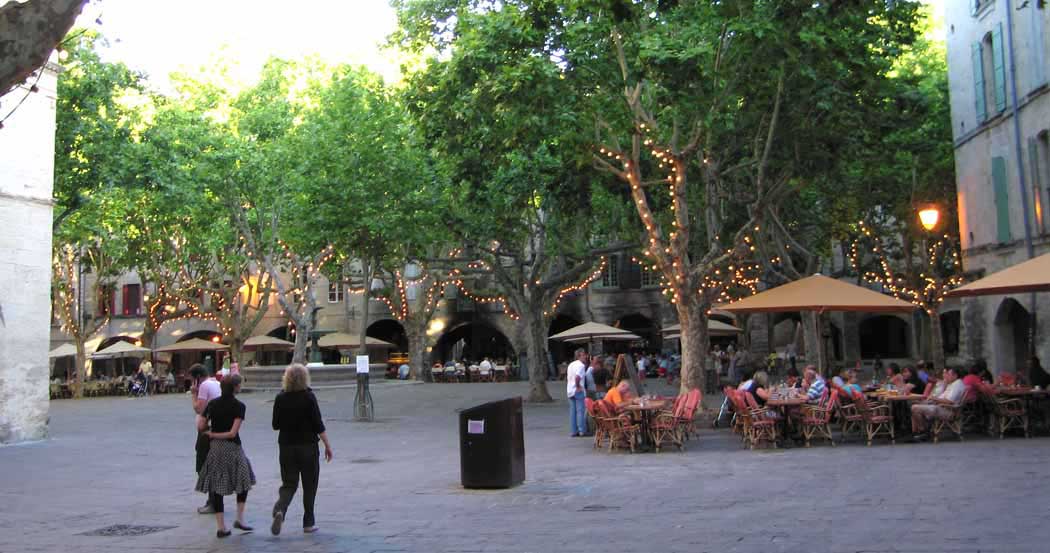
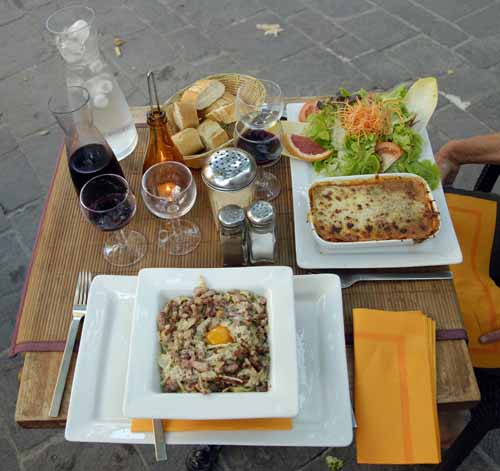
Fairy lights strung through the huge plane trees gave the place a festive air, although the stones were still pumping out heat at 8:30 pm.
We sat down and ordered a drink, which we followed with a large salad, then lasagne and pasta carbonara, both substantial and delicious dishes.
It was after 10 pm when we walked back in the dark to our tent.
Previous section: Fontaine-de-Vaucluse to Pont-du-Gard